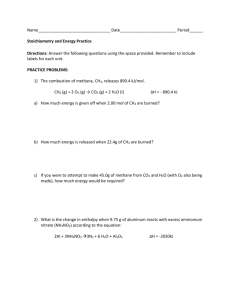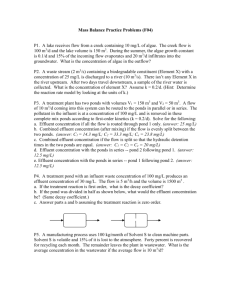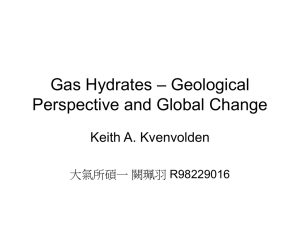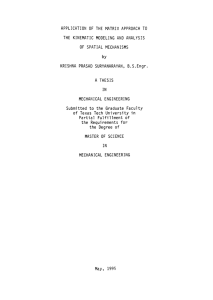jgrg20489-sup-0001-s01
advertisement
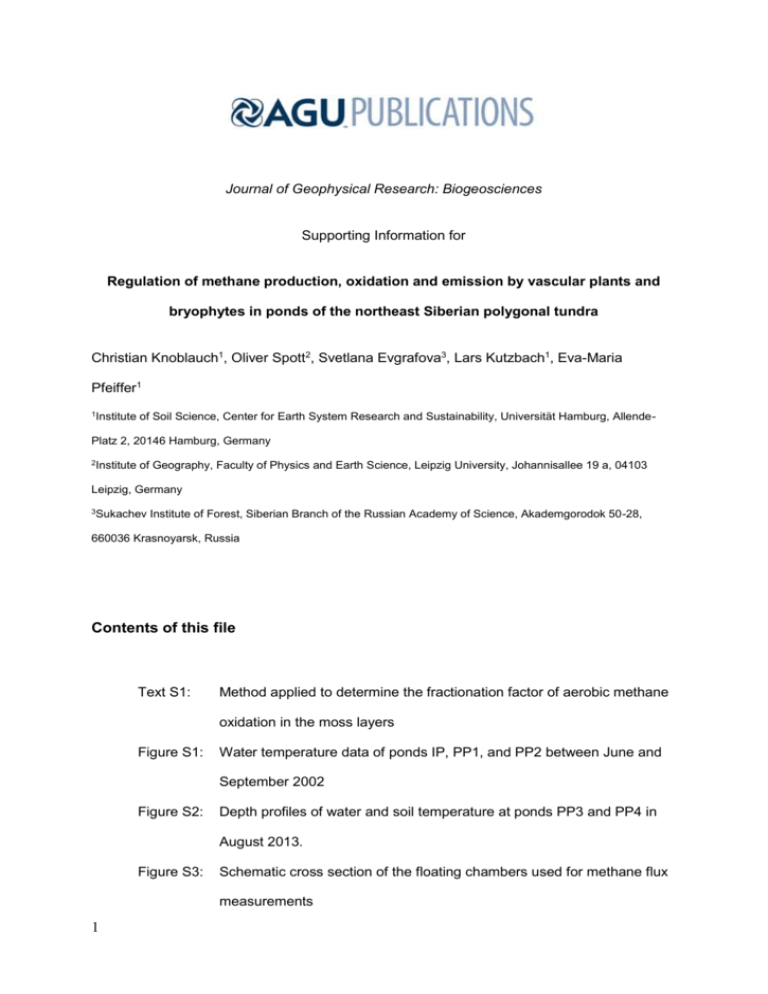
Journal of Geophysical Research: Biogeosciences Supporting Information for Regulation of methane production, oxidation and emission by vascular plants and bryophytes in ponds of the northeast Siberian polygonal tundra Christian Knoblauch1, Oliver Spott2, Svetlana Evgrafova3, Lars Kutzbach1, Eva-Maria Pfeiffer1 1Institute of Soil Science, Center for Earth System Research and Sustainability, Universität Hamburg, Allende- Platz 2, 20146 Hamburg, Germany 2Institute of Geography, Faculty of Physics and Earth Science, Leipzig University, Johannisallee 19 a, 04103 Leipzig, Germany 3Sukachev Institute of Forest, Siberian Branch of the Russian Academy of Science, Akademgorodok 50-28, 660036 Krasnoyarsk, Russia Contents of this file Text S1: Method applied to determine the fractionation factor of aerobic methane oxidation in the moss layers Figure S1: Water temperature data of ponds IP, PP1, and PP2 between June and September 2002 Figure S2: Depth profiles of water and soil temperature at ponds PP3 and PP4 in August 2013. Figure S3: Schematic cross section of the floating chambers used for methane flux measurements 1 Figure S4 Mean methane fluxes from different sampling sites at five different ponds of the polygonal tundra on Samoylov Island Figure S5 Habitus of the three most common vascular plants in the ponds of the polygonal tundra on Samoylov Island Text S1. Determination of the fractionation factors of aerobic methane oxidation The fractionation factors for aerobic methane oxidation were determined in Germany on moss samples from each of the six plots at ponds PP3 and PP4 used for emission measurements. The samples were incubated in closed bottles with an initial CH4 partial pressure of about 450 hPa in air at 4°C. CH4 concentrations and stable isotope signatures were measured repeatedly until the partial pressure reached about 10 hPa. Repeatedly, the headspace gas in the incubation bottles was circulated through an Ascarite (Sigma-Aldrich, USA) trap to remove produced CO2. The stable isotope signature of CH4 in the headspace was not affected by CO2 scrubbing. The isotopic fractionation factor α was calculated by the simplified Rayleigh model [Mahieu et al., 2006]: 13 CH 4,t ln 1000 13Ct ln CH 4, 0 1 1000 C0 where CH4,0 is the partial pressure of methane at time 0, CH4,t is the partial pressure of methane at time t, δ13C0 is the δ13C value of methane at time 0, and δ13Ct is the δ13C value of methane at time t. The fractionation factor α was calculated from the slope (m) of the linear regression between ln(CH4,t/CH4,0) and ln[(1000+δ13Ct)/(1000+δ13C0)] as: m 1 m Literature: Mahieu, K., A. De Visscher, P. A. Vanrolleghem, and O. Van Cleemput (2006), Carbon and hydrogen isotope fractionation by microbial methane oxidation: Improved determination, Waste Manage., 26(4), 389-398, doi:10.1016/j.wasman.2005.11.006. 2 Figure S1. Seasonal water temperature in three ponds (IP, PP1, PP2) on Samoylov Island. Left panels (a, c, and e) show a comparison of surface water temperatures at the shallow margins and the open water centers of the ponds, right panels (b, d, and f) show the water temperature at different depths between the water surface and the moss layer at the margins. 3 Figure S2. Depth profile of water temperatures on two ponds (PP3, PP4) on Samoylov Island. The dashed line gives the soil surface, the blue arrow the range of water table height during the measurements. Symbols above the blue arrow give the air temperature at the respective sampling date. Figure S3. Schematic cross section of the floating chambers used for methane flux measurements at the open water centers of ponds IP, PP1 and PP2. The pyramidically shaped underwater chamber was installed below the floating chamber. It trapped ascending gas bubbles (ebullition flux) that were collected through a rubber stopper at its top. The underwater chamber covered the same area as the floating chamber to prevent that gas bubbles enter the floating chamber. 4 Figure S4. Mean methane fluxes from different sampling sites at five different ponds (IP, PP1, PP2, PP3, PP4) on Samoylov Island. Small letters behind the ponds identifier give the position of the measurements, either at the margins of the ponds, vegetated by vascular plants (m) or at the open water centers (c). Numbers below the data give the number of total emission measurements at the respective site. Vertical bars give one standard deviation of the mean. Measurements at pond IP, PP1 and PP2 were made between July and September 2002, those at ponds PP3 and PP4 in the last two weeks of August 2013. 5 Figure S5. Habitus of the three most common vascular plants in the ponds on Samoylov Island, the grass Arctophila fulva (a), and the sedges Carex aquatilis (b) and Carex chordorrhiza (c). The pen used as size marker is 14 cm long. Plants were collected, prepared and photographed by Gillian Simpson. 6


